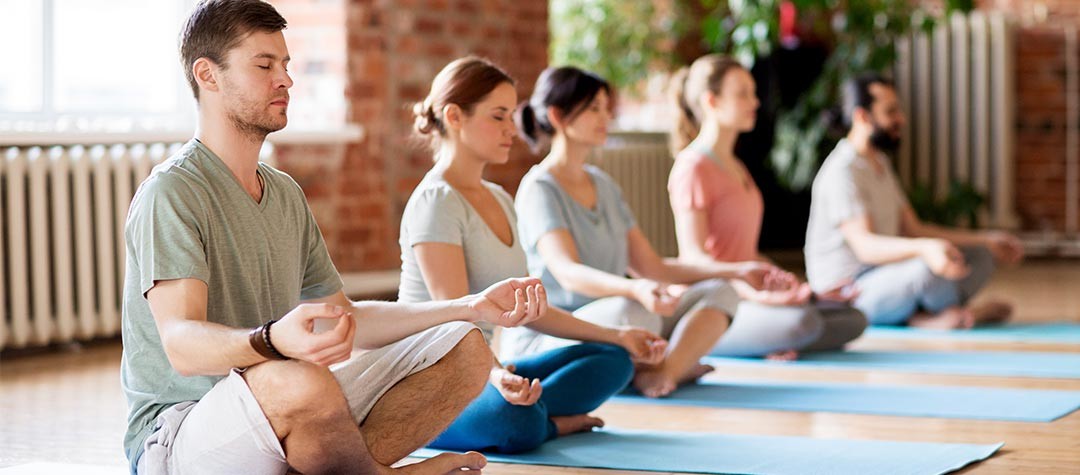Many people are aware that they suffer from postural problems but often don’t know how to correct it. Here's a guide to improving your posture through exercise.
Probably the best examples of good posture are those shown by young children, whose natural activities clearly demonstrate that most of them have excellent posture. For example, think about how a young child watches television. Invariably they will sit on the floor completely upright and with a straight back.
However, if you ask adults to adopt the same position, most will begin to fatigue within a minute, and may end up slouching forwards and supporting their weight on their knees. The reason for this is that adults usually sit down on soft, inviting sofas – a seated position that requires no effort from the back, abdominal or core muscles . If the muscles aren’t used, they will lose condition via the ‘use it or lose it’ principle.
Health problems of bad posture
‘Use it or lose it’ is a frequently over-repeated adage, but it still rings true with respect to strength and flexibility. If we neglect either of these two areas of fitness, our muscles become ‘de-trained’ and the end result is that we struggle to keep an upright posture. The primary areas that suffer from this postural neglect are the back, chest, and abdominal and core muscles - which can all end up being too tight, overstretched or too weak.
Consider the following postural issues examples:
- Upper back. Years of driving or working at a computer often leaves you with overstretched upper back muscles, which cause the ‘round-shouldered’ look.
- Chest. The chest muscles can lose flexibility when the shoulders are pulled forward - which is usually what happens when you sit in a hunched position in front of the computer or at the wheel.
- Abdominals. Lack of attention to maintaining good abdominal muscle tone results in a weakened abdominal wall and a sagging stomach.
- Lower back. If you have weakened abdominal muscles, the resulting lack of support at the front of your body results in a gradual arching of the back as the spine tries to counteract the weight of your sagging stomach.
- Core. These deep postural muscles run right around the body from the ribcage down to the groin, and provide essential support and strength for the entire body. These can often become de-trained through lack of use - which will have a negative effect on your posture as a result.
Exercise solutions to bad posture
If you feel that your posture has suffered over the years, read our posture correction tips below and try out our suggested posture exercises in order to help your posture return to a healthier alignment.
- Rounded shoulders. For this condition, focus on stretching out the chest muscles and building strength in the upper back. Strengthening your upper back muscles will cause them to become tighter - which, combined with chest flexibility exercises, will gradually return you to an upright posture. Suitable exercises include the reverse flye and the dumbbell row.
- Sagging stomach. Abdominal exercises are obviously needed to improve a sagging stomach - but it is important to combine upper and lower abdominal exercises so that your posture will fully benefit. Sit-up exercises are excellent for building upper abdominal strength, while v-sit exercises will target the lower abdominals.
- Tight lower back. This condition frequently comes in tandem with poor abdominal strength and can often result in considerable lower back discomfort. The problem here is that the lower back muscles are continually ‘switched on’ with no respite, which can cause increasing pain and soreness as the day progresses. To help alleviate a tight lower back, focus on lower back flexibility exercises to stretch the muscles out. If you combine this with the abdominal training described above, you will get long term relief.
- Weakened core muscles. Your core muscles are effectively your body’s chassis. In addition to abdominal and lower back exercises, by carrying out core training you will uniformly strengthen the entire area, thereby providing support for all your body’s movements. An excellent foundation core exercise to start building core strength is ‘the plank’.
Everyday postural exercise tips
Many everyday activities can contribute to maintaining good posture. To improve and maintain your posture, check out the following top five postural tips - all of which will actively contribute to you automatically 'walking tall':
- Look ‘over the wall’. Whenever you walk, make sure that your head is up and you are looking straight ahead - almost as if you’re looking over a wall. If your head is in the correct position, you will be well on the way to aligning your whole body correctly.
- Pull your shoulders back. By contracting the muscles in between your shoulder blades when you walk, you will be able to pull your shoulders back and avoid the ‘slumped look’.
- Switch on your core. Look to partially activate your core muscles whenever you move, so that your abdomen is held in. This will protect your lower back from discomfort, as well as help to keep your body stable.
- Sit on a stability ball. Try swapping your chair at work for a stability ball . Focus on sitting upright at all times, as the tiny correctional movements that you have to continually make to counteract the ball’s constant instability will help you to build strength and endurance in your core muscles.
- Elevate your monitor. Many people simply position their computer monitor on their desk without any thought as to long-term ergonomics. Try to site your monitor high, level with your eyeline, so that you are forced to sit upright and with a straight back. Although this will be tiring at first, your body will soon adapt to the position as your core strength improves.
Better posture from exercising
Of course, your postural exercises aren’t finished once you have retrained dormant muscles and restored your body to its correct alignment. The factors that resulted in your posture needing correction are still present: you will still drive your car, relax on sofas, work at computers and so on.
Postural training is therefore a lifelong commitment, and it is essential to continue with your exercise program so that problems don’t recur. However, once you have developed correct posture and core awareness, it is easy to maintain - and ‘walking tall’ will become an automatic process.














